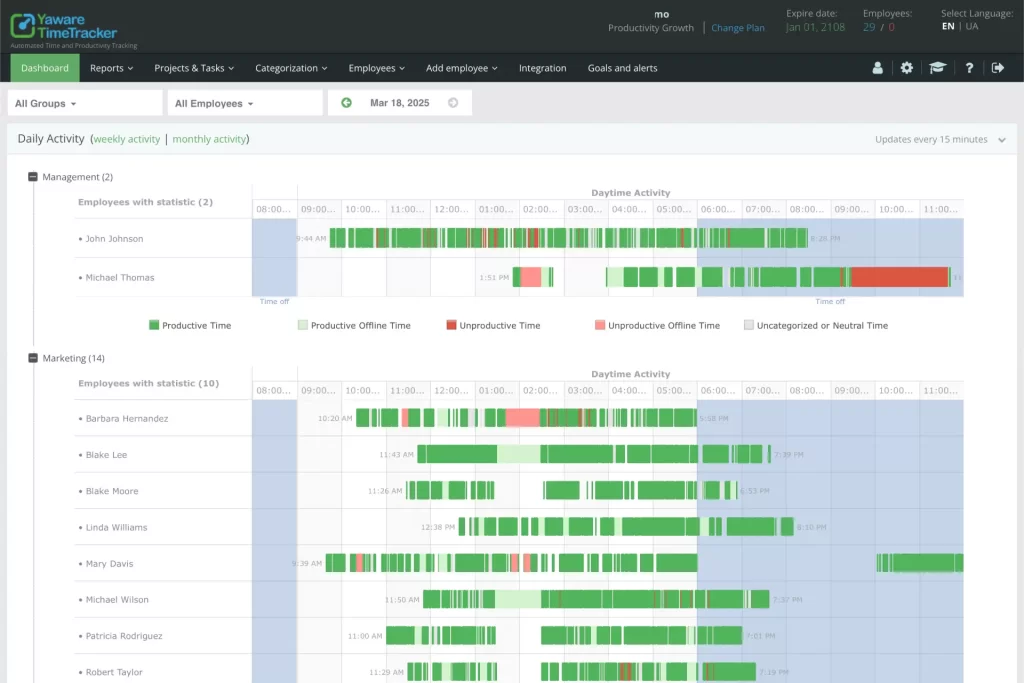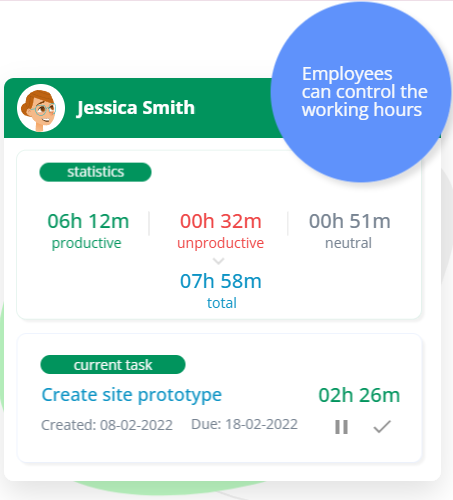The first 30 days of a new hire’s journey define how well they’ll integrate, perform, and contribute to the team. HR professionals need more than gut feeling or anecdotal feedback — they need structured, measurable insight. A reliable time tracker designed for onboarding gives managers the tools to see how a new employee is adapting to workflows, handling tasks, and balancing time.
Without tracking, it’s difficult to pinpoint bottlenecks, identify early burnout, or provide constructive feedback. But with accurate data on productivity, engagement, and task allocation, HR can make data-informed decisions from week one — not wait until probation ends.
Why Tracking New Hire Performance Helps HR Teams Make Better Decisions
- Helps spot early signs of over- or underperformance before they become patterns
- Shows how much time is spent on training versus actual task execution
- Reveals which tools, apps, or tasks consume the most attention
- Allows HR to support employees who struggle silently with task volume
- Gives managers hard data for early feedback conversations and coaching
💡 Tip: Tracking is not surveillance — it’s a framework for support, clarity, and smarter onboarding.
What a Time Tracker Should Measure During the First Month
Every new employee goes through a ramp-up phase. Some learn quickly, others take longer. But in both cases, HR teams benefit from visibility into work patterns. A good onboarding time tracker focuses on activity quality, not just logged hours. It shows how well someone is adapting — whether they’re spending time on key tools, engaging with core systems, or getting stuck in unproductive loops.

By measuring behavior patterns with Yaware.TimeTracker, HR can align training content, assign mentors, and reduce confusion in the first weeks. Instead of making assumptions, they operate based on real engagement data.
Core Metrics a Time Tracker Should Capture for New Hires
- Time spent in active work applications related to the role
- Frequency and length of idle periods during working hours
- Balance between training modules and real task execution
- Engagement with communication tools and collaboration platforms
- Focused work sessions versus fragmented multitasking
💡 Tip: Don’t just measure productivity — analyze the learning curve. Early insights reduce risk and improve long-term retention.
How Time Tracking Supports a Stronger Onboarding Experience
Onboarding is not a checklist. It’s a high-stakes transition period where first impressions, workload clarity, and cultural alignment matter. A well-implemented time tracking system gives HR a real-time window into how prepared and supported a new hire feels — and where friction still exists.

When used correctly, tracking builds trust. Employees understand that the goal is not to control, but to enable better feedback, smoother onboarding, and faster alignment with expectations.
How Time Trackers Improve Onboarding at Every Step
- Gives HR visibility into training engagement and task readiness
- Enables managers to adjust onboarding pace based on real-time input
- Supports early intervention before disengagement sets in
- Helps standardize the onboarding process across departments
- Encourages accountability from both sides — managers and new hires
💡 Tip: Introduce time tracking as a success tool during onboarding, not a monitoring system. Framing it right makes all the difference.
Choosing the Best Time Tracker for HR and Onboarding Needs
The best time tracking tool is one that integrates easily, requires minimal setup, and provides actionable insights. HR teams don’t need overly complex dashboards. What they need is clarity: What is the new hire doing? Where are they excelling? What do they need help with?
A strong tracker should offer timeline visualizations, customizable activity reports, and intuitive UX. It should adapt to different roles, allow granular analysis, and support transparent communication between managers and employees.
👉 If your HR team is ready to move from guesswork to clarity in onboarding — a purpose-built time tracker will give you the edge. Early insight leads to better outcomes, stronger engagement, and smarter retention strategies.

